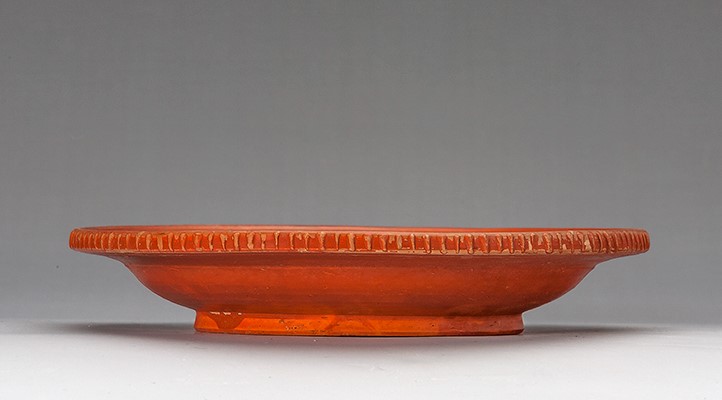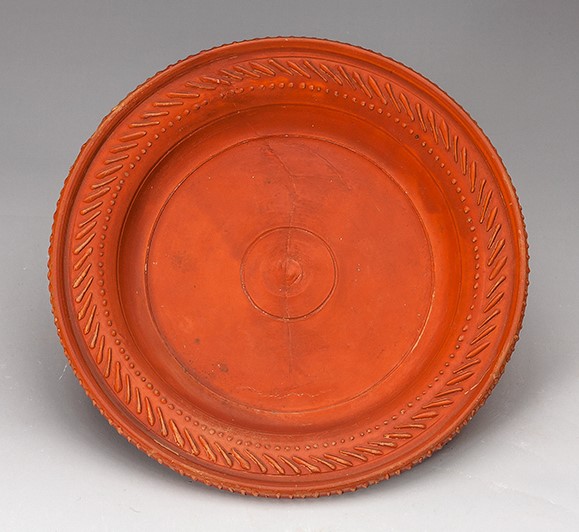Acquisition number: 1968.08
Broken across the floor and a small triangular area restored; generally in good condition but for some slight wear of the surface. Ring foot. The interior of the plate is decorated with two incised circles and then another at the inner edge of the lip. On the upper face of the lip is a row of dots and of oblique strokes in relief; around the outer edge of the lip, a series of verticals. The whole is covered with lustrous red glaze. Traces of fingermarks about the foot are evidence that the vase was dipped in the glaze rather than had it painted on.
Title: Roman Red-Slipped Plate - 1968.08
Acquisition number: 1968.08
Author or editor: J.R. Green
Culture or period: Roman Imperial
Date: 1st century AD.
Material: Clay - Terracotta
Object type: Plate
Dimensions: 200mm (w) × 36mm (h)
Display case or on loan: 12
Keywords: Roman, Imperial, Red Slip
Folio Fine Art Ltd (London), Catalogue 51 (January 1968) no. 594b; J.R. Green with B. Rawson, Catalogue of Antiquities in the Australian National University, A.N.U. (Canberra, 1981) 78.
1968.08
Roman Red-Slipped Plate
Purchased. Ht 3.6cm; diam. 20cm.
Broken across the floor and a small triangular area restored; generally in good condition but for some slight wear of the surface. Ring foot. The interior of the plate is decorated with two incised circles and then another at the inner edge of the lip. On the upper face of the lip is a row of dots and of oblique strokes in relief; around the outer edge of the lip, a series of verticals. The whole is covered with lustrous red glaze. Traces of fingermarks about the foot are evidence that the vase was dipped in the glaze rather than had it painted on.
In the course of the second century BC, potters in Asia Minor began to fire their wares in a simple oxidising atmosphere instead of the traditional three-stage firing: the resulting pottery is therefore not black but a rich glossy red. Mainland Greek and Italian potters were slower to adopt this fashion but it had spread to Italy by the mid-first century BC; by the first century AD red-painted pottery had become standard throughout the Empire.
This plate is decorated in the so-called barbotine technique by which refined clay was piped onto the surface of the vase to create patterned effects. Our example is probably to be dated to the first century AD.
Folio Fine Art Ltd (London), Catalogue 51 (January 1968) no. 594b; J.R. Green with B. Rawson, Catalogue of Antiquities in the Australian National University, A.N.U. (Canberra, 1981) 78.

